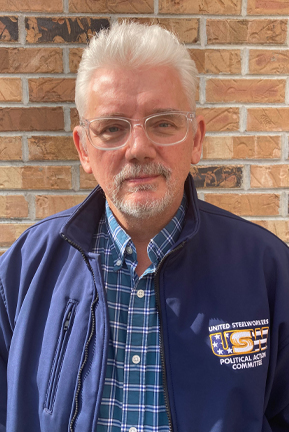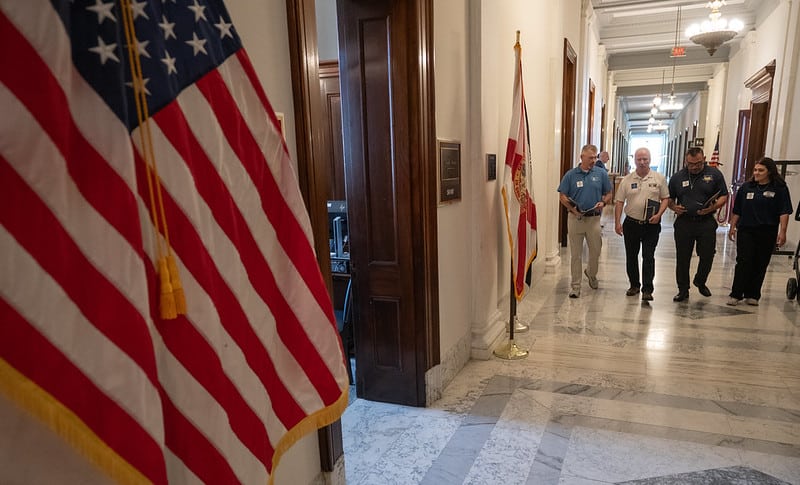
Building Back OSHA
When Ron Brady drives through highway construction zones, he makes a point of looking for safety violations that threaten workers’ lives.
He’s seen more and more of them the past few years as employers, emboldened by the weakened state of the U.S. Occupational Safety and Health Administration (OSHA), grew increasingly comfortable flouting the rules.
Funding and staffing shortages engineered by the previous presidential administration hobbled OSHA and put workers in numerous industries at risk. But now, Congress is poised to pass a bill that would help revitalize the agency and provide the resources needed to protect workers in a growing economy.
Along with many other provisions helping workers and their families, the Build Back Better legislation recently approved by the House would position OSHA to respond to more work sites, investigate additional complaints and proactively address a greater number of hazards.
“They’ve been woefully understaffed for a long time,” observed Brady, president of United Steelworkers (USW) Local 14614, which represents about 1,200 workers in the chemical, construction, gaming, manufacturing and other industries in West Virginia.
“They’re very professional,” he said of OSHA inspectors. “I’ve always found them to be very well trained. I think a lot of them are frustrated. They don’t have the resources to really do the job. There simply aren’t enough of them to cover it.”
The number of OSHA inspectors fell to the lowest level in half a century, and the agency conducted fewer investigations into top hazards like chemical exposure and musculoskeletal risks, as the previous president deliberately undercut the agency to benefit corporations.
Brady maintained a close watch on his members’ safety.
But in recent years, he said, he’s seen other construction workers navigate high beams without fall protection and risk their lives in work zones lacking the proper signage. And he knows that the starving of OSHA also put workers in other industries at higher risk.
“Everybody’s cutting corners and cutting budgets and trying to do more with fewer people. It’s something that’s going to get worse and worse,” Brady said.
After taking office in January, President Joe Biden quickly took steps to put OSHA back on course. He filled key vacancies and appointed proven, experienced advocates to top leadership positions. But more is needed to reenergize the agency’s mission of prevention and deterrence.
The Build Back Better legislation, now before the Senate, would help Biden realize his goal of doubling the number of inspectors, to about 1,500, while also empowering the agency to impose significantly higher fines, as high as $700,000 per willful violation in some cases, on employers who flout safety.
The bigger penalties are needed to deter safety lapses. Brady said the current low fines merely encourage employers to gamble with workers’ lives.
The additional resources provided through the Build Back Better bill also would enable OSHA to focus on other kinds of prevention, like development of national standards to protect workers against growing and emerging threats.
After a combustible dust incident killed a colleague in 2015, for example, workers at the former International Paper mill in Ticonderoga, N.Y., and the USW’s Health, Safety and Environment Department worked with OSHA and the company to implement new safety measures intended to ensure no tragedy like that ever happened again.
But workers worried about their counterparts at other facilities across the U.S. who remained vulnerable, and they looked for OSHA to implement industry-wide safeguards.
They’re still waiting.
OSHA began working on a combustible dust standard even before the tragedy at Ticonderoga underscored the need for it. But the agency shelved the project during the previous administration because of “resource constraints and other priorities.”
“If there was a combustible dust standard, everyone would have rules to follow,” explained Paul Shaffer, president of USW Local 005, which represents workers at the paper mill, now owned by Sylvamo.
“It would make work much safer for everybody in the industry,” he said, noting standards both raise awareness and spell out the steps employers are required to take to keep workers safe. “You can’t protect against something you don’t know about.”
Combustible dust is just one threat requiring OSHA’s attention. Workers also need national standards to help protect them from heat stress—a growing danger because of climate change—as well as infectious diseases and workplace violence. Without OSHA specifying the safeguards employers must take and holding them accountable, observed Shaffer, workers and unions “spend a lot of time trying to get companies to do what’s right.”
It’s essential to strengthen OSHA as the nation prepares to carry out the historic, $1 trillion package of infrastructure investments that Biden signed into law last month.
Upgrades to roads and bridges, airports, locks and dams, energy systems and communications networks will sustain millions of middle-class jobs, benefiting construction workers as well as workers who produce the raw materials, parts and components needed for infrastructure projects.
Those workers will rely on OSHA to respond to complaints, inspect work sites and take other measures needed to keep them safe.
Brady recalls the days when OSHA inspectors regularly visited job sites and looks forward to a time when they once again not only respond to complaints but make spot checks to provide safe and healthy workplaces.
“It makes management more safety-conscious,” he said.
*
Photo of Ron Brady
By clicking Sign Up you're confirming that you agree with our Terms and Conditions.
Related Blogs
Ready to make a difference?
Are you and your coworkers ready to negotiate together for bigger paychecks, stronger benefits and better lives?

